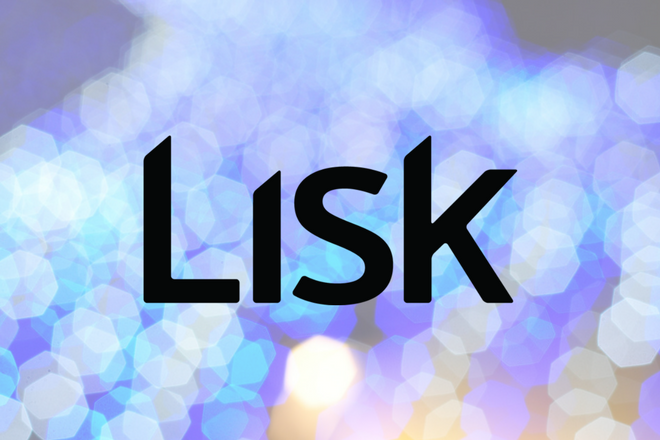With the market being swamped with new cryptocurrencies, it is no small task to keep up with the state of play. While Bitcoin and Ethereum are firmly planted in the spotlight, it’s all too easy for other currencies of value to get lost in the noise; the list of dead altcoins is piling up faster than a squirrel’s acorns in winter.
So, the question remains, who deserves our attention?
For the record, Lisk is a big deal. Between inking a partnership with Microsoft Azure and being the 7th most successful ICO of all time by ROI, there are armfuls of valid reasons that Lisk should be on your radar. This post explores exactly what Lisk is, and why you ought to care about the world’s first modular blockchain-based platform.
What Does Lisk Do?
As more and more industries look to take advantage of blockchain technologies, they will need a tool to create applications. Enter: Lisk, a blockchain application platform with its own native crypto token, LSK.
Any tool that makes a seemingly complex task simpler is as good as gold, and that is the essence of Lisk’s purpose; making blockchain apps simpler to develop, stabler, and more flexible.
How will Lisk bring this to the table? The chef’s secret sauce is all about sidechains.
Currently, blockchain technology has two models:
- Single blockchains
- Private blockchains
Instead of opting for one of these existing models Lisk “strives to offer the best of both worlds”: offering the stability and security of the main Lisk blockchain, while allowing users the freedom to develop custom applications on sidechains.
While Lisk isn’t the only tool to create blockchain applications (see Ethereum and NEO), it is unique in that its decentralized apps (Dapps) run on its own sidechains. This grants unparalleled flexibility, allowing users to produce heavily customized applications while the main blockchain stays safe as houses.
It also seeks to make developing blockchain applications more accessible; this is why its apps are written in JavaScript. If you listen hard enough, you just might hear a global collective sigh of relief from programmers and developers; JavaScript is perhaps the most commonly spoken language for coding. The big boys at Microsoft see the enormous potential of this, and have integrated Lisk into Azure Blockchain as a Service.
Lisk embodies a reliable, secure platform that takes away the barriers to creating bespoke applications. Games, social networks, messengers, and other applications can be built entirely independent of platforms. The platform’s Lisk App SDK enables developers to create both the back end (the stuff under the hood), and the front end (the user interface) of applications.
History of Lisk
The 2016 origins of Lisk lies in the frustrations of two developers, Max Kordek and Oliver Beddows. Kordek’s quote sums up their quandary nicely: “There is no public cryptocurrency platform which allows developers to easily deploy their own blockchain and build a JavaScript blockchain app on it.”
Seeing the lack of participation in blockchain amongst developers, the pair concluded that accessibility was the elephant in the room; it just wasn’t easy enough to start developing applications on the blockchain.
The project is a fork from their efforts at Crypti, which provided the foundation for the concept of Lisk. From the ground up, they engineered their new project for ease-of-access; providing comprehensive support, documentation, and JavaScript as the language of choice for apps, naturally.
During February and March 2016, the ICO distributed 100 million Lisk tokens for $5.8 million, making it the 2nd most successful crypto crowdfund at the time. As of November 2017, it is the 7th most successful ICO of all time by ROI.
The Lisk Team
Max Kordek and Oliver Beddows head up Lisk. The company is registered in Switzerland, a rapidly growing hub for crypto start-ups due to its relaxed stance on cryptocurrencies and neutral political status. The team comprises some 23 ambitious individuals hired through Lightcurve, a Berlin-based blockchain consultancy affiliated with Lisk.
There are some heavy-hitters from Ethereum on board, with Charles Hoskinson (ex-CEO of Ethereum) and Steven Nerayoff (ex-advisor to Ethereum) now acting as Senior Advisors at Lisk. These players lend Lisk not only their experience and knowledge, but also the legitimacy of the world’s second most prominent cryptocurrency.
Aside from the standard top-down approach, Lisk is walking the talk of its vision to make blockchain available to the masses. Its Country Ambassadors Initiative is a unique feature of the project, designating an individual for each country to “strengthen the bond between the Lisk core team and local communities”. Ambassadors are tasked with supporting Lisk community members in their respective nations, as well as promoting the adoption of the Lisk ecosystem.
Competitors and Challenges
It doesn’t take too much technical know-how to see that Ethereum is Lisk’s biggest rival in the space. From the get-go, the two cryptocurrencies have been pitched against each other; even by the Lisk team themselves. During their Reddit ICO campaign thread, Lisk described themselves as “the Ethereum alternative for JavaScript developers” – which, in the programming world, means the alternative for the masses.
The founders have since distanced themselves from Ethereum, as Lisk’s inherent value has been defined. While Ethereum stores its contracts in a single blockchain, Lisk’s use of sidechains makes it scalable unlike its more established competitor. What’s more, Lisk seeks to remove the barriers to blockchain application development; in a sense, making itself much more user-friendly than Ethereum. Here’s a handy table that compares Lisk versus Ethereum.
Admittedly, Lisk’s use of JavaScript is a bit of a double-edged sword. While JavaScript is an immensely popular language and a low barrier to entry, quantity doesn’t guarantee quality. If the masses are able to easily write code, there could well be an abundance of poorly-written projects for Lisk.
This presents an inherent challenge to the Lisk project. A vulnerable smart contract is a recipe for trouble, with potentially millions – if not billions – of dollars lying unsecured on the table.
That said, Lisk knows this all too well, and has factored it into the equation. Instead of skirting around the issue, they are addressing the elephant in the room; making provisions to strengthen the code base. With a transition to TypeScript on the cards, the team is committed to building a sustainable and secure platform.
In the world of crypto, you can’t put a price on security, and this is why in addition to the technical challenge of securing the technology, Lisk must fight to retain its credibility in the eyes of the market. Only by doing this will Lisk truly flourish.
How to Purchase and Store Lisk

To obtain Lisk, the first step is to create an account and download their wallet at lisk.io. It is a quick install, and once you have gone through the initial steps you will be asked to store your seed phrase in a safe place; do not lose this! Should your hard drive fail, your access to your tokens will be gone like the wind.
Next, you need to exchange other cryptocurrencies for Lisk. Reputable exchanges are Bittrex, Polionex and Kraken. If Lisk is your first cryptocurrency investment, you can purchase it with fiat currency (e.g. USD) at sites like Changelly.
Note: purchasing Lisk with fiat is the more expensive option, as these sites typically charge a substantial fee for their service.
Whichever way you exchange, in the final stage of the transaction, you will need to enter your wallet address, and ta-da! Your tokens will appear in your wallet.
Last Thoughts
The access to blockchain technology is being defined and dictated by the likes of Bitcoin and Ethereum, and they aren’t likely to be giving out their secret recipe any time soon. For this type of technology to benefit the masses, widespread adoption is needed, and that is exactly what Lisk seeks to achieve and enable.
By removing the barriers to application creation, Lisk has built a platform that may very well revolutionize the space; enabling developers from diverse backgrounds to easily create Dapps on secure sidechains.
If Microsoft can comprehend the potential for this technology, we have every reason to expect this project to see continued success. After all, it is the key to unlock blockchain.

